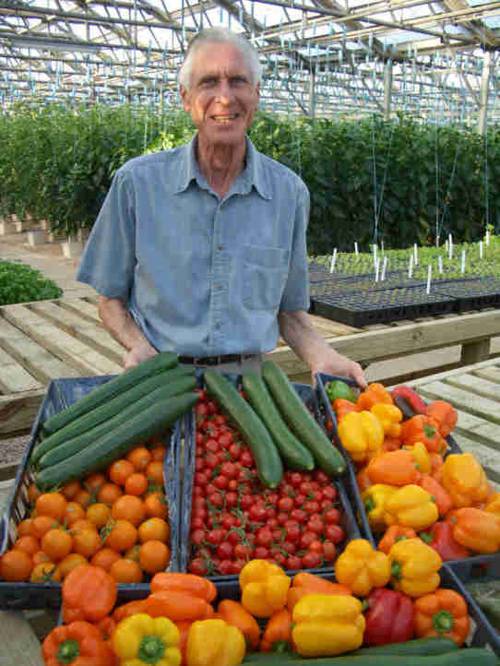
FAQ About Companion Planting for Indoor Vegetables

What is companion planting for indoor vegetables?
Companion planting is the practice of growing different plants together to benefit one or more of them. For indoor vegetables, this technique can improve growth, enhance flavor, deter pests, and maximize the use of space in a confined environment. Certain plant combinations can create a more balanced ecosystem and improve overall plant health and yield.

Which vegetables are suitable for indoor companion planting?
Many vegetables are suitable for indoor companion planting, including tomatoes, peppers, leafy greens like spinach and lettuce, herbs like basil and chives, and legumes such as peas and beans. These plants can thrive when paired with compatible companions that enhance their growth and repel pests.

How does companion planting boost growth in indoor vegetables?
Companion planting boosts growth by facilitating beneficial interactions between plants. For example, certain plants release nutrients that can be absorbed by neighboring plants, improving nutrition. Additionally, vertical plants can provide shade for those that require less light, creating a more favorable growing environment. The diverse plant range also helps to ensure consistent soil health by preventing nutrient depletion that occurs with monocropping.

What are some pest-resistant plant combinations for indoor gardening?
Some effective pest-resistant combinations for indoor gardening include planting basil with tomatoes to repel whiteflies and mosquitoes, pairing marigolds with many vegetables and herbs to deter nematodes and aphids, and combining mint with cabbages to ward off cabbage moths. These combinations use natural plant properties to keep pests at bay, reducing the need for artificial pesticides.

Can companion planting improve the flavor of indoor-grown vegetables?
Yes, companion planting can improve the flavor of indoor-grown vegetables. For instance, herbs like basil are often planted with tomatoes because they are believed to enhance the tomatoes' flavor. Similarly, aromatic herbs can increase certain vegetables' multi-sensory appeal by imparting subtle changes in flavor profile through close proximity in growth.

Are there any disadvantages to companion planting indoors?
While companion planting has many benefits, it also presents challenges. One potential disadvantage is the complexity of managing plant interactions; some plants may compete for light, water, or nutrients, negatively impacting each other's growth. Additionally, incorrect plant pairing may lead to unanticipated plant diseases or pest problems. Careful planning and regular observation are necessary to manage these potential issues.

How do you plan a companion planting setup for an indoor garden?
Planning a companion planting setup involves selecting compatible plant partners based on growth requirements and benefits. Begin by researching which plants thrive together, taking into account their needs for light, water, and space. Use containers that provide sufficient room for root growth and arrange plants to optimize their interrelated benefits, prioritizing space-efficient and nutrient-sharing arrangements.

Is companion planting effective in small indoor spaces?
Yes, companion planting is especially effective in small indoor spaces. It allows for efficient use of space by combining plants that mutually benefit from sharing resources and being close together. Vertical gardening or using tiered plant shelves can maximize the utilization of limited space, allowing multiple companion plants to thrive together even in compact settings.

What are some common companion plants for tomatoes when grown indoors?
Common companion plants for tomatoes grown indoors include basil, which repels pests and enhances flavor; chives, which help deter aphids; and nasturtiums, which can trap aphids and other insects away from the tomatoes. These combinations help create a balanced ecosystem that protects and enhances the growth of tomato plants indoors.

Can herbs be used as companion plants for indoor vegetables?
Herbs are excellent companion plants for indoor vegetables because they often have properties that repel pests and can enhance the flavor of nearby vegetables. For instance, planting mint can repel certain insects, while basil is known to enhance the growth and taste of tomatoes. Herbs like parsley and dill also attract beneficial insects, such as ladybugs, to control pests naturally.

What is the role of marigolds in indoor companion planting?
Marigolds play a crucial role in companion planting by naturally repelling harmful insects and nematodes with their distinctive scent. They also attract beneficial insects, such as bees and butterflies, which assist in pollination. Marigolds are often placed near a wide variety of vegetables and herbs for their protective benefits, making them a preferred choice in many indoor planting arrangements.

Should root vegetables be included in indoor companion planting?
Root vegetables can be a part of indoor companion planting systems, although they require particular care due to their space needs below the soil surface. When paired with plants that have minimal or shallow root systems, root vegetables like radishes or carrots can be effectively integrated into indoor gardens, helping diversify the range of crops and enhance soil fertility through different nutrient requirements.

How does light availability affect companion planting indoors?
Light availability significantly influences companion planting as different plants have varying light requirements. Some plants need full sunlight, while others thrive in partial shade, which can be managed through strategic planting arrangements. Tall or trellised plants can provide shade to those needing less light, allowing each plant to access its required light intensity and reducing competition.

What are some essential tips for successful indoor companion planting?
To ensure successful indoor companion planting, consider the following tips: 1) Research and choose compatible plants with complementary needs; 2) Arrange the plants to optimize light distribution; 3) Ensure containers provide adequate drainage and space; 4) Rotate crops regularly to prevent soil nutrient depletion; 5) Monitor plant health closely to identify and address any pests or diseases early.

Is it possible to use hydroponics for companion planting indoors?
Yes, hydroponics can be used for companion planting indoors. This soil-less system allows for enriched nutrient control, which can be fine-tuned for different plant species. By selecting plants with similar nutrient and water needs, hydroponic setups can efficiently integrate companion planting, taking full advantage of the symbiotic relationships between plants even without soil.

How does container size impact companion planting for indoor vegetables?
Container size is critical in companion planting for indoor vegetables as it dictates how many plants can be grown together and how well their roots can develop. Adequate space allows for optimal root growth and nutrient absorption, which is vital for healthy plant development. Overcrowded containers can lead to competition for resources, which may stunt growth or reduce yields.

What are some indicators of a successful companion planting setup indoors?
Indicators of a successful companion planting setup include robust plant growth, minimal pest infestation, balanced soil moisture, and improved vegetable yields. If plants appear healthy and the ecosystem is stable, with plants providing mutual benefits such as pest deterrence or nutrient enhancement, it suggests that the companion planting strategy is working effectively.

How can climate control enhance companion planting indoors?
Climate control, such as managing temperature, humidity, and airflow, can enhance companion planting efforts by creating optimal conditions for each plant species. This control helps ensure that plants with varied environmental needs can still be grown together by adjusting the indoor climate to balance these requirements and promoting plant health and productivity.

Can companion planting indoors help reduce the use of pesticides?
Yes, companion planting indoors can reduce the need for pesticides by naturally deterring pests. Plant combinations are chosen for their ability to repel or trap harmful insects, such as using basil to deter whiteflies or mint to ward off ants. By reducing pest problems naturally, reliance on chemical pesticides decreases, leading to a more organic and environmentally-friendly growing approach.

What are some examples of beneficial insects attracted by companion planting indoors?
Beneficial insects that can be attracted to an indoor companion planting setup include ladybugs, which feed on aphids, and hoverflies, which consume a variety of pests such as thrips and aphids. Plants that flower or have strong scents, such as dill or fennel, can help draw these helpful insects, providing natural pest control and pollination support.
